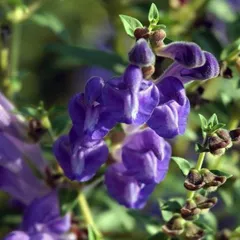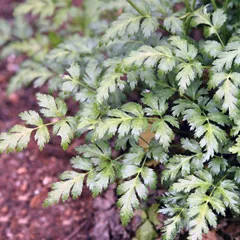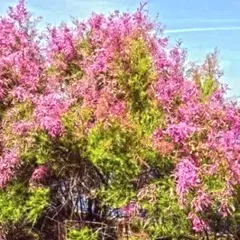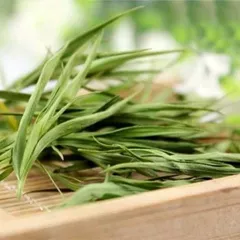Wind-Heat
The information provided here is not a replacement for a doctor. You shouldn't use it for the purpose of self-diagnosing or self-medicating but rather so you can have a more informed discussion with a professional TCM practitioner.
At a glance
Preliminary reading: What is a pattern? The concept of Wind The concept of Heat
Key attributes
Chinese name: 风热 Pinyin name: Fēng Fè
Pattern nature: Full
Pattern hierarchy: General pattern
Causes
Common causes: External pathogenic factor
Diagnosis
Common symptoms: Fever Sneezing Coughing Sweating Runny nose and five other symptoms
Pulse type(s): Rapid (Shu), Floating (Fu)
Tongue description: Red tongue with thin white coating
Treatment
Treatment principle: Disperse External Wind Heat, clear Internal Heat, relieve Toxicity, relieve cough
Common formulas: Yin Qiao San Sang Ju Yin Cong Chi Tang and seven other formulas
Pathology
Within the Four-Levels theory, Wind-Heat is the first level of invasion of External Pathogens, when it still resides in the body's Exterior.
This pattern is similar to Wind-Cold, but the Wind is together with Heat rather than Cold. The common symptoms are aversion to cold, sneezing, coughing, runny nose (with different mucus color), fever, occipital stiffness and ache. The different symptoms are the yellow mucus, thirst, slight sweating, more fever and red tongue tip or sides. The pulse is rather Rapid than Tight.
The Lungs are one of the first Organs to be affected by invasion of Wind-Heat. Its function of dispersing Defensive Qi to the skin and muscles are greatly disturbed, so that both can not be warmed properly. Therefore, patients feel chilly and dislike cold environment
The tongue tip or sides are red, which indicates the Exterior case. The thin white coating appears often at the beginning of the disease, because the Pernicious Evil is on the Exterior.
Causes
External pathogenic factor: Wind-Heat is caused by a combination of Heat and Wind, two of the so-called "Six Evils".
Diagnosing Wind-Heat
Diagnosing a pattern in Chinese Medicine is no easy feat and should be left to professional practitioners. In particular one has to know how to differentiate between different types of pulses and tongue coatings, shapes and colors as well as learn to read from a long list of seemingly unrelated symptoms.
Pulse type(s): Rapid (Shu) or floating (Fu)
Tongue description: Red tongue with thin white coating
Main symptoms: Fever Sneezing Coughing Sweating Runny nose Sore throat Yellow mucus Aversion to cold Occipital stiffness Occipital headaches
Diagnosis commentary: Key characteristic symptoms of this pattern are the aversion to cold, sneezing and runny nose with slight yellow mucus.
Treating Wind-Heat
Treatment principle
Disperse External Wind Heat, clear Internal Heat, relieve Toxicity, relieve cough
Herbal formulas used to treat Wind-Heat
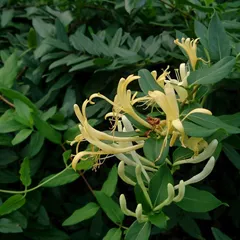
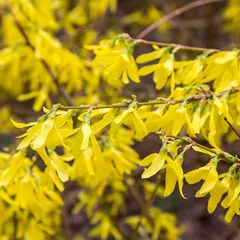
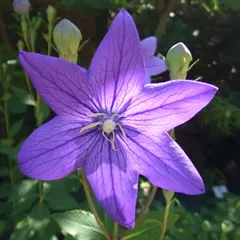
The top herbs in Yin Qiao San are Honeysuckle Flowers (Jin Yin Hua), Forsythia Fruits (Lian Qiao) and Platycodon Roots (Jie Geng)
Yin Qiao San
Source date: 1798 AD
Number of ingredients: 10 herbs
Key actions: Disperses Wind Heat. Clears Heat. Resolves Toxicity.
Formula summary
Yin Qiao San is a 10-ingredient Chinese Medicine formula. Invented in 1798 AD, it belongs to the category of external formulas for External disorders.
Besides Wind-Heat, Yin Qiao San is also used to treat Wind-Heat invading the Lungs or Exterior-Heat.
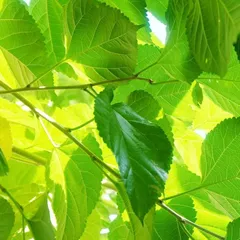
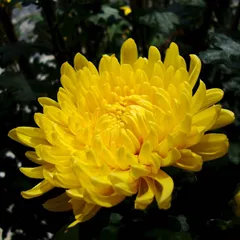

The top herbs in Sang Ju Yin are Mulberry Leaves (Sang Ye), Chrysanthemum Flowers (Ju Hua) and Forsythia Fruits (Lian Qiao)
Sang Ju Yin
Source date: 1798 AD
Number of ingredients: 8 herbs
Key actions: Disperses Wind. Stops coughing by invigorating Lung Qi. Clears Heat.
Formula summary
Sang Ju Yin is a 8-ingredient Chinese Medicine formula. Invented in 1798 AD, it belongs to the category of formulas that clear Wind-Heat.
Besides Wind-Heat, Sang Ju Yin is also used to treat Toxic-Heat.
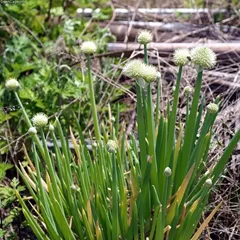
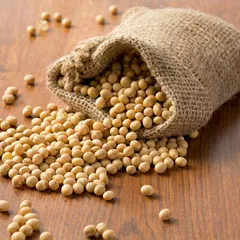

The top herbs in Cong Chi Tang are Scallions (Cong Bai) and Fermented Soybeans (Dan Dou Chi)
Cong Chi Tang
Source date: 3rd Centry
Number of ingredients: 2 herbs
Key actions: Unblocks the Yang Qi (Defensive Qi) in the Exterior . Induces sweating .
Formula summary
Cong Chi Tang is a 2-ingredient Chinese Medicine formula. Invented in 3rd Centry, it belongs to the category of formulas that clear early-stage Exterior disorders.
Besides Wind-Heat, Cong Chi Tang is also used to treat Wind-Cold.


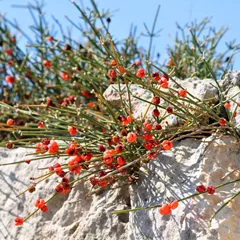
The top herbs in Huo Ren Cong Shi Tang are Scallions (Cong Bai), Fermented Soybeans (Dan Dou Chi) and Ephedra (Ma Huang)
Huo Ren Cong Shi Tang
Source date: 1108 AD
Number of ingredients: 4 herbs
Key actions: Unblocks the Yang Qi (Defensive Qi) in the Exterior . Induces sweating .
Formula summary
Huo Ren Cong Shi Tang is a 4-ingredient Chinese Medicine formula. Invented in 1108 AD, it belongs to the category of formulas that clear early-stage Exterior disorders.
Besides Wind-Heat, Huo Ren Cong Shi Tang is also used to treat Wind-Cold.
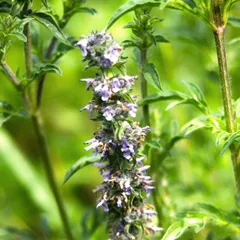
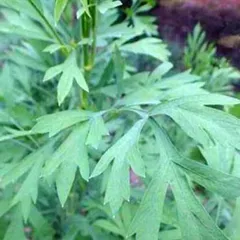
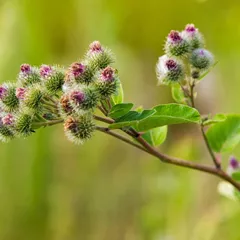
The top herbs in Xiao Feng San are Japanese Catnip (Jing Jie), Saposhnikovia Roots (Fang Feng) and Greater Burdock Fruits (Niu Bang Zi)
Xiao Feng San
Source date: 1617 AD
Number of ingredients: 13 herbs
Key actions: Disperses Wind. Eliminates Dampness. Clears Heat. Cools the Blood.
Formula summary
Xiao Feng San is a 13-ingredient Chinese Medicine formula. Invented in 1617 AD, it belongs to the category of formulas that dredge and disperse External Wind.
Besides Wind-Heat, Xiao Feng San is also used to treat Damp-Wind.

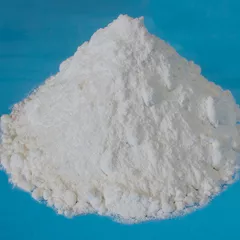
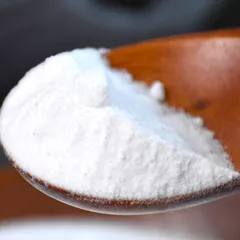
The top herbs in Bing Peng San are Borneol (Bing Pian), Borax (Peng Sha) and Exsiccated Sodium Sulfate (Xuan Ming Fen)
Bing Peng San
Source date: 1617 AD
Number of ingredients: 4 herbs
Key actions: Clears Toxic-Heat. Dispels putrescence. Reduces swellings and relieves pain.
Formula summary
Bing Peng San is a 4-ingredient Chinese Medicine formula. Invented in 1617 AD, it belongs to the category of external formulas for External disorders.
Besides Wind-Heat, Bing Peng San is also used to treat Toxic-Heat.
Pu Ji Xiao Du Yin
Source date: 1202 AD
Number of ingredients: 14 herbs
Key actions: Clears Toxic-Heat. Clears Wind-Heat .
Formula summary
Pu Ji Xiao Du Yin is a 14-ingredient Chinese Medicine formula. Invented in 1202 AD, it belongs to the category of formulas that clear Heat and resolve toxicity.
Besides Wind-Heat, Pu Ji Xiao Du Yin is also used to treat Toxic-Heat.


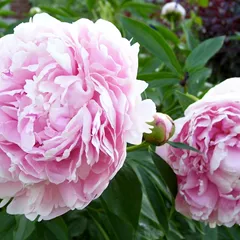
The top herbs in Jing Jie Lian Qiao Tang are Japanese Catnip (Jing Jie), Forsythia Fruits (Lian Qiao) and White Peony Roots (Bai Shao)
Jing Jie Lian Qiao Tang
Source date: 1773 AD
Number of ingredients: 12 herbs
Key actions: Dispels Wind. Clears toxic-Heat. Disperses Stagnation.
Formula summary
Jing Jie Lian Qiao Tang is a 12-ingredient Chinese Medicine formula. Invented in 1773 AD, it belongs to the category of formulas that clear Wind-Heat.
Zhu Ye Cheng Liu Tang
Source date: 1613 AD
Number of ingredients: 11 herbs
Key actions: Releases the Exterior. Vents rashes. Clears. Generates Body Fluids.
Formula summary
Zhu Ye Cheng Liu Tang is a 11-ingredient Chinese Medicine formula. Invented in 1613 AD, it belongs to the category of formulas that clear Wind-Heat.


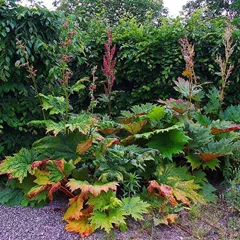
The top herbs in Fang Feng Tong Sheng San are Saposhnikovia Roots (Fang Feng), Ephedra (Ma Huang) and Rhubarb (Da Huang)
Fang Feng Tong Sheng San
Source date: 1172 AD
Number of ingredients: 17 herbs
Key actions: Disperses Wind. Releases the Exterior. Drains Heat. Unblocks the bowels.
Formula summary
Fang Feng Tong Sheng San is a 17-ingredient Chinese Medicine formula. Invented in 1172 AD, it belongs to the category of formulas that release the Exterior and purge the Interior.
Consequence patterns
External Wind Heat can penetrate the Defense Qi and settle down in the Lungs.
If left untreated Wind-Heat can lead to Lung Heat
If left untreated Wind-Heat can lead to Stomach Heat
If left untreated Wind-Heat can lead to Gallbladder-Heat
During acute febrile diseases such as measles, encephalitis and meningitis, external Heat can invade and penetrate deeply into the Blood level and stir up the Wind. It is more common among children.

